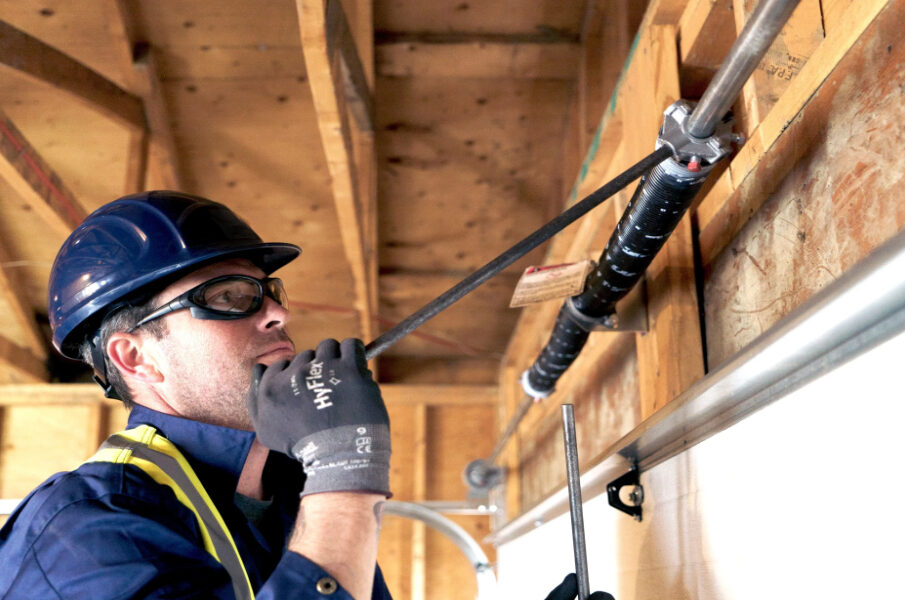Understanding Garage Spring Replacement: A Comprehensive Guide for Homeowners

Garage doors are essential components of modern homes, providing security, convenience, and access to vehicles and storage. One critical aspect of garage door functionality is the garage spring system. Over time, these springs can wear out or break, necessitating a timely and effective garage spring replacement. This guide aims to provide homeowners with a thorough understanding of garage spring replacement, including types of springs, signs of wear, safety precautions, and the replacement process.
Types of Garage Door Springs
Garage doors typically utilize two main types of springs: torsion springs and extension springs.
Torsion Springs
Torsion springs are mounted above the garage door, parallel to the door’s opening. They work by twisting and providing the necessary torque to lift the heavy door. Torsion springs are known for their durability and efficiency, often lasting longer than their extension counterparts. However, they are also more complex to replace due to their high tension.
Extension Springs
Extension springs are located on either side of the garage door tracks and stretch to help lift the door. These springs are generally easier to install and replace but tend to have a shorter lifespan compared to torsion springs. Homeowners should choose the spring type that best suits their garage door’s weight and usage frequency.
Signs Your Garage Springs Need Replacement
Recognizing the signs of wear and potential failure can save homeowners from safety hazards and costly repairs. Here are several indicators that Garage Spring Replacement may be necessary:
- Visible Damage: Inspect the springs for any signs of rust, gaps, or fractures. Any visible damage is a clear indication that replacement is needed.
- Difficulty Opening the Door: If the garage door struggles to open or close, or if it becomes stuck midway, the springs may be weak or broken.
- Noisy Operation: Unusual sounds, such as loud bangs or creaking, may indicate that the springs are failing or have lost their tension.
- Uneven Door Movement: If the door appears to be uneven or slanted when opening or closing, it can signal that one of the springs is malfunctioning.
- Age of the Springs: Most garage springs last around 7-14 years, depending on usage and maintenance. If the springs are approaching or have exceeded this age, a proactive replacement may be warranted.
Safety Precautions
Garage spring replacement can be a dangerous task, especially for those without experience. Homeowners should prioritize safety by following these guidelines:
- Do Not Attempt DIY Repairs: Unless you have specific training, attempting to replace garage springs without professional help can lead to serious injury. The high tension in springs can cause them to snap, posing risks to anyone nearby.
- Use Safety Gear: If attempting any repairs, always wear protective gear, including gloves and safety glasses, to shield against potential hazards.
- Work in a Safe Environment: Ensure the garage area is clear of obstacles and distractions to minimize the risk of accidents.
The Garage Spring Replacement Process
For those who choose to hire a professional for garage spring replacement, understanding the general process can help homeowners know what to expect.
Step 1: Assessment
A qualified technician will first assess the existing springs and the overall condition of the garage door system. This step involves identifying the type of springs needed for replacement and checking other components for wear and tear.
Step 2: Disengagement of the Garage Door
The technician will disconnect the garage door from the opener to allow for manual operation during the replacement. This step ensures that the door can be safely manipulated during the process.
Step 3: Removal of Old Springs
Next, the technician will carefully remove the broken or worn springs. This process involves releasing the tension in the springs before detaching them from the garage door and the mounting brackets.
Step 4: Installation of New Springs
Once the old springs are removed, the technician will install the new springs. Proper tension will be applied to ensure that the garage door operates smoothly. The installation must be precise to prevent future malfunctions.
Step 5: Testing
After installation, the technician will test the garage door to ensure it opens and closes correctly. This step is crucial to verify that the garage spring replacement has been successful.
Conclusion
Understanding the importance of garage spring replacement is essential for every homeowner. Recognizing the signs of wear and knowing when to seek professional assistance can ensure the longevity and safety of your garage door system. By prioritizing safety and opting for qualified technicians, homeowners can enjoy a smoothly functioning garage door, safeguarding their property and enhancing convenience. Regular maintenance and timely replacements will not only extend the life of your garage door springs but also contribute to the overall security and functionality of your home.
















